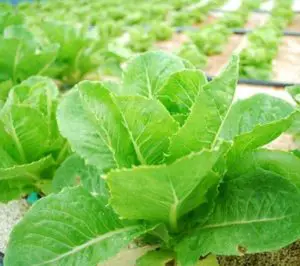Contents
With aquaponics, plants, and fish are grown together in the same environment, and this method is considered sustainable. In contrast, hydroponics is another form of gardening that doesn’t require soil for the plants to grow.
The effectiveness and benefits of these soilless systems depend on what you are using them for. Nonetheless, certain plants do better with either method, which is why you should learn more about the differences between the two.
What is Aquaponics?
 The cultivation of fish and plants is aquaponics, which mixes fish and plants by a symbiotic relationship. Bacteria in the surrounding area turn fish excrement directly into nitrates when you use this growing method. The nitrogen cycle creates a growth cycle in which the nitrates are used as food for the plants before being reused by the fishes, resulting in a clean and efficient growth process.
The cultivation of fish and plants is aquaponics, which mixes fish and plants by a symbiotic relationship. Bacteria in the surrounding area turn fish excrement directly into nitrates when you use this growing method. The nitrogen cycle creates a growth cycle in which the nitrates are used as food for the plants before being reused by the fishes, resulting in a clean and efficient growth process.
Over time, the accumulation of solid waste can become toxifying to the fish. However, the bacteria introduced into the water convert the waste into helpful nitrates before you can do any harm. You can use a few different systems with aquaponics, including media beds, vertical towers, and the nutrient film technique. Aquaponics farming and growing are straightforward, but there are many options.
What is Hydroponics?
In a hydroponic environment, plants are grown solely with chemicals and filtered water circulated by a water pump to be grown without soil. In the United States, this method is the most common way to grow basil, lettuce, and tomatoes. Plants can be grown hydroponically with benefits – yields are high and with consistent results.
Hydroponic gardening grows plants in a water-based solution that contains organic nutrients. The plant roots are suspended directly in nutrient-rich water, giving them access to essential substances that help them grow. In the meantime, oxygen will be accessible to the rest of the plants, allowing them to continue growing. Hydroponic systems vary, with most of them altering the nutrient-enriched water flows to the leafy greens.
The Differences Between Aquaponics vs. Hydroponics
Hydroponics and aquaponics are both highly effective methods of growing healthy plants. But there are some differences between them that you should consider before deciding which is right for you. Boosting your plants’ growth without soil is one of the main benefits of both of these methods. However, the method you choose will require you to take some time to learn about, so it is recommended that you know the differences between the two methods.
Nutrient Costs
It is very expensive to use chemical nutrients in hydroponic farms. Furthermore, these essential nutrients have become scarce in recent years, which has further increased costs. Alternatively, aquaponics systems use less expensive fish food.
Nutrient Retention
Even though hydroponics requires highly concentrated nutrient solutions, the systems accumulate too much salt and chemicals to the point where the water becomes toxic. Thus, it will require regular disposal of water. Water in an aquaponics system is perfectly balanced with nitrogen. Because of this, an aquaponics system shouldn’t require additional water.
Maintenance
Aquaponic systems do not require much maintenance. In contrast, a hydroponic system requires daily testing of the water’s electrical conductivity. Water chemistry will remain relatively stable in an aquaponics system as a result of the natural ecosystem. Checking pH and ammonia only need to be performed once a week, and monitoring nitrate levels only need to be done monthly.
Productivity
Once an aquaponics system is fully up and running, which generally takes about six months, the results should be somewhat faster growth than hydroponics.
Growth
Unlike natural environments, a hydroponic system is artificial. It is organic because aquaponics systems are designed to mimic a fully natural ecosystem. Many of the plant nutrients used in hydroponic systems are salts and chemicals, which aren’t environmentally friendly. Fish waste is converted into plant food naturally with aquaponics, allowing the organic growth of plants.
pH
Hydroponic systems need a nutrient-rich water solution with a pH of 5.5–6.0. The pH of this water makes it slightly acidic, making it suitable for hydroponic growth. A pH level of 6.8-7.0 should, on the other hand, be considered neutral in an aquaponics system.
Pesticides
Although plant pests are far less problematic in these systems than soil-based gardening, some insects, such as thrips and spider mites, can still be nuisances. It may be necessary to use pesticides with a hydroponic system to eradicate these insects. A non-chemical method is necessary for aquaponics systems to prevent harming the fish.
Similarities Between Aquaponics vs. Hydroponics
Although there are some differences between these two methods, they also share several similarities. These include:
Environmental Impact
Using aquaponics and hydroponics systems, plants are grown indoors with very little weed and pest concern. Because these systems rarely encounter such problems, you won’t have to use as many chemicals in your garden, which lessens the possibility of adverse effects on the environment.
Growing Season
As compared to traditional growing methods, both of these systems have long growing seasons. You will be able to grow crops all year long with these systems since they are usually indoors, so you could even grow some fruits and vegetables during the off-season.
Faster Plant Growth
Unlike traditional soil-based plants, these plants can grow 30-50 percent faster in non-soil systems. It is because the plants have access to a large amount of oxygen that they grow so quickly. As a result, roots grow stronger, and nutrients are absorbed more effectively.
Higher Crop Yield
The yield of plants grown in hydroponics or aquaponics systems is 30-40 percent higher than other methods. By reducing insect pressure and giving the plants more food consistently, yields are higher.

